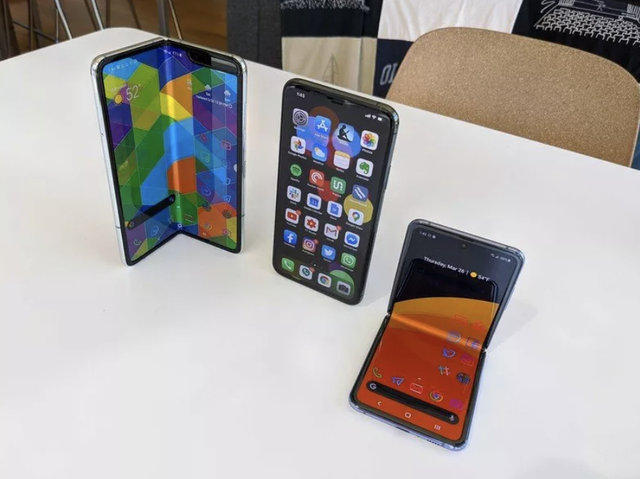When will foldable phones be popular?
- Tram Ho
According to a report from the IDC International Data Center, the demand for foldable phones will increase in 2021. Specifically, 7.1 million units have been shipped compared to 1.9 million units in 2020. This data analyst predicts that the foldable phone market will reach a total revenue of nearly 30 million units with a value of up to $29 billion by 2025.
So, if the foldable phone market is growing, what will be the attractive points for buyers?
The main attraction of this series of phones lies in the convenience of size. In some cases, their full screen size is even larger than that of a traditional mobile device. But can this benefit outweigh the exorbitant selling price?
Here are a few things needed for foldable phones to become more popular.

Foldable screen phones, but the price is still high and the durability needs to be tested over time – Photo: IDC
Price
5 years ago, no one thought that a smartphone could be worth up to 20 – 50 million dong.
But now, as the tech world transforms with new smartphone form factors such as folding, rolling, or rotating phones, the aforementioned pricing is no longer so novel. Innovation is good, but not everyone can be willing to spend that much money just to buy a phone.
Fortunately, cash flow is always changing. Foldable phones could become mainstream if they follow the trajectory. As demand increases, many different technology companies will invest together, causing the leading manufacturers to lose their unique position. That leads to the folding screen phone becoming more and more affordable to increase competition.
Screen Durability
While the backs of foldable phones are quite durable as they can be made of the same material as the backs of a regular phone, their fronts are still very weak and prone to scratches and dents. distortion. This seems inevitable because the front screen will need a tough and flexible material to be able to perform the folding operation with a fairly high frequency.
All foldable phones that have been produced and released so far suffer from this problem. Manufacturers are trying to improve continuously, but this technology simply has many shortcomings to be able to last long.
No wrinkles
Another inevitable problem that all foldable mobile devices are facing is the crease on the screen. When the screen folds and unfolds several times a day, it forms a noticeable crease in the center of the screen, resulting in hindered navigation.
To make a foldable phone without any creases is a big challenge.
General aspect ratio
Not only the hardware needs improvement, but the software also needs a few tweaks.
Foldable phones often have a different aspect ratio due to their shape. For example, the 22.5:18 aspect ratio of the Samsung Galaxy Z Fold 3 causes quite a bit of inconvenience.
Most YouTube videos are shot in 16:9 aspect ratio, so when watching them on the Samsung Galaxy Z Fold 3 (or other foldable phones), users will notice two giant black spaces in the screen. above and below the video cause a lot of discomfort.
Support application
Currently, there aren’t enough apps to take full advantage of this new phone. App developers create apps primarily for the masses, not just to support a special few. This is why iPhones often have more optimized and supported apps than Android phones.
Folding screen phones have not had enough influence on the market for app developers to care. Although the big Google is still trying to convince them to design applications for foldable phones to dominate.
In short, folding smartphones will become popular, but not at the moment.
While some have argued that smartphones today all look the same, there hasn’t been a more revolutionary change to a smartphone in the past decade than this.
At this point, everything is just speculation because there are too few factors to confirm anything. This new line of smartphones will continue to be challenged until it is truly optimized.
Source : Genk
